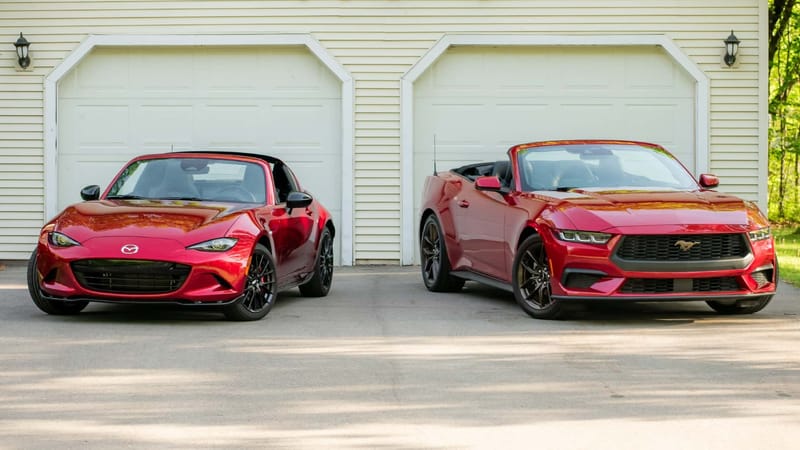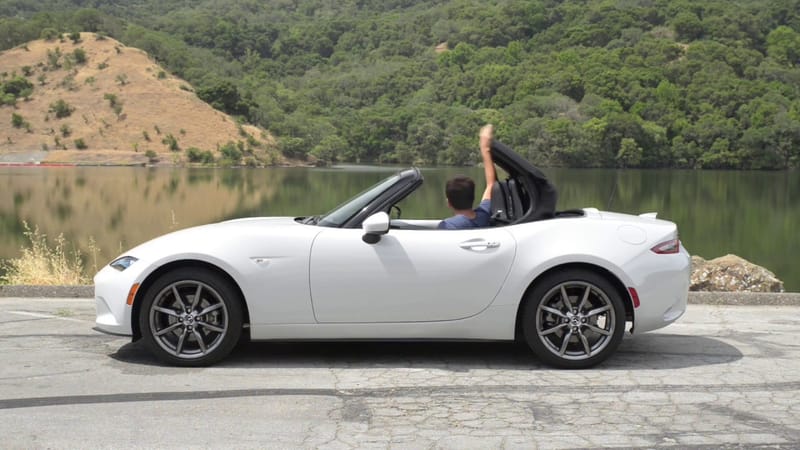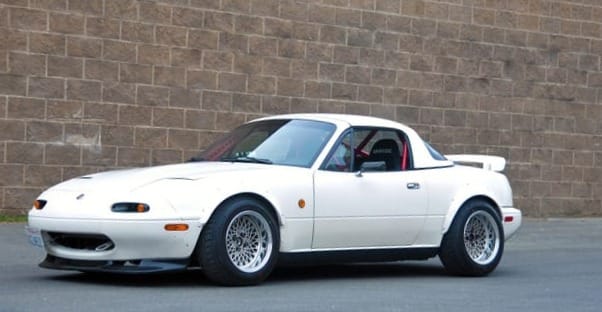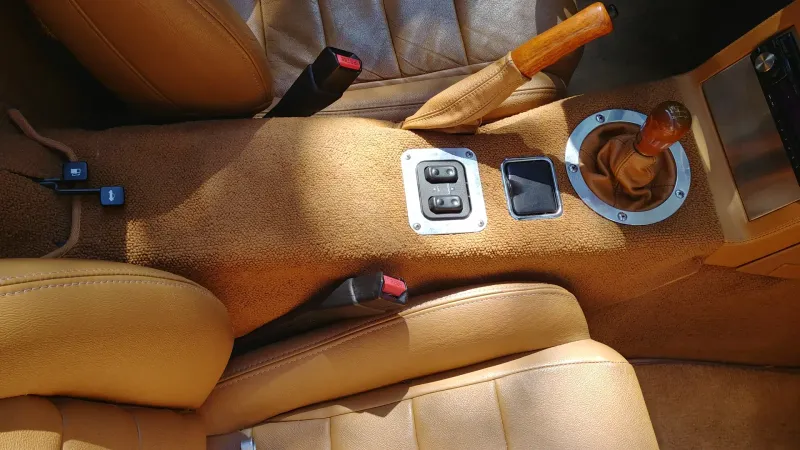Miata Sim-Racing Rig Build Guide
To capture true Miata feel in a sim rig, focus on low seating, a compact wheel, crisp H-pattern shifts, and pedals tuned for trail-braking precision. This guide links goals to the right hardware, geometry, and software.
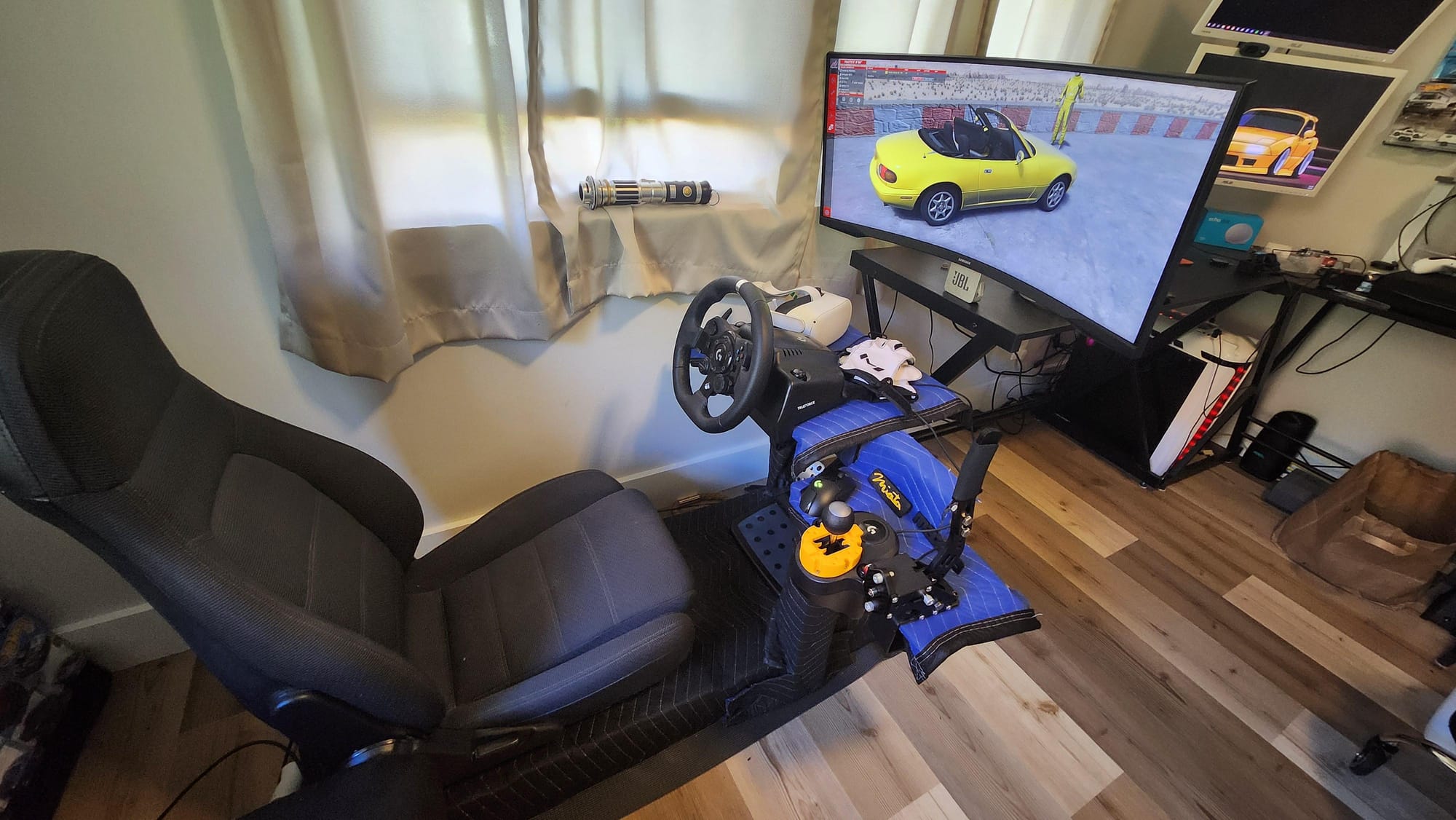
You’re building a rig that drives like a Miata: low seating, compact wheel, crisp H-pattern shifts, light-ish steering effort with MX-5 Cup character, and pedals that reward trail-braking finesse. This guide maps goals to hardware to geometry to software, with Miata-specific measurements you can copy and tune.
Define Your Target “Miata” Experience
For a Rookie Cup vibe, keep force feedback light and clean rather than heavy and muddy. Focus on proper steering rotation, correct field of view, and rock-solid pedal consistency. For a street NA/NB feel, aim for a wheel diameter around 350–370 mm, a short-throw shifter with a weighted knob, and a supportive seat angle that’s low but not full “formula.” If you’re chasing touge or autocross flavor, emphasize quick, precise hand inputs, progressive brake modulation, and tactile road texture from kerbs and pavement seams. Subtle seat and pedal haptics go a long way toward making the car feel alive without cranking FFB.

Budget Paths And What Changes First
A starter path pairs an entry belt or gear-drive wheel with load-cell pedals on a static cockpit and a single 27–32 inch monitor set to the correct FOV. Pedals are your first big upgrade because braking precision drops lap times fastest. An enthusiast setup adds a 5–12 Nm direct-drive base on an 8020 cockpit, an H-pattern shifter, optional handbrake, triples or an ultrawide, and one or two transducers for tactile feedback. A high-end build moves to 12–20 Nm, more segmented haptics, and eventually motion, but still keeps Miata-appropriate force levels rather than bodybuilding-class steering.

Cockpit Geometry That Feels Like A Miata
Match the real car’s proportions. Keep steering diameter around 350–370 mm for OEM-like feel, or 330–360 mm if you prefer quicker hands. Sit so your elbows are roughly 90–100 degrees at your normal hand position, your wrists can rest on top of the rim with shoulders still on the seatback, and the wheel face is square to your torso. Mount the seat low with a backrest angle around 100–110 degrees, and set pedals slightly below hip height for a GT posture. As a starting blueprint for 8020, plan a frame about 130 cm long by 74 cm wide with inner crossbars roughly 65 cm apart for seat and pedal trays, then tailor to your body.
Using A Real Miata Seat Or Matching One
A genuine NA/NB seat instantly delivers the right bolster shape and cushion length. Mounting spans vary by rail and brand, but typical ballparks are around 347 mm wide and 300 mm fore-aft for floor bolt footprints, while many aftermarket side-mount patterns land near 290 by 395 mm. Always measure your own seat and rails before drilling. If you can’t source OEM, pick a compact bucket close to about 19.5 inches at the base and 21 inches at the shoulders, then mount it as low as possible using a slider and low-profile brackets.

Wheelbase, Rotation, And FFB For The MX-5
Set the device to 900 degrees and let the sim map each car’s steering lock so you achieve true 1:1 on-screen rotation. The Miata rewards lighter, unclipped force feedback with lots of micro-detail. If your base has auto strength or per-car analysis, use it to avoid clipping. On direct drive, keep friction and damping low and just high enough to control oscillations; belt bases usually benefit from a touch more damping; gear bases often need a bit more again to tidy the coggy feel. You don’t need 20 Nm to feel authentic. A clean 5–10 Nm base with proper tuning can feel more “MX-5” than a stronger unit turned down too far.
Shifter, Handbrake, And Pedals That Say “Miata”
A short-throw H-pattern with a weighted knob captures the shifter’s iconic notchiness. Mount it close to your thigh and slightly higher than seat base height so your wrist stays neutral. Invest earliest in pedals: a load-cell brake with progressive elastomers lets you build pressure for threshold stops and bleed it smoothly into the apex. Keep throttle travel smooth and not overly spring-heavy for fine mid-corner control. A clutch with a bite-point cam is nice to have, not mandatory. If you add a handbrake for drift or touge, mount it forward-right of the shifter and angle it slightly back for a natural pull.

Screens, VR, And Getting FOV Right
Any display path works if your field of view is correct. For a single monitor, measure eye-to-screen distance from your final seating position and enter that into the sim’s FOV calculator. For triples, use a calculator to determine angle and distance, then physically set the side panels to match; typical angles land between the mid-40s and 60 degrees depending on screen size and distance. VR nails sense of scale and car placement; trim motion effects if you’re sensitive. In all cases, measure first, then drive, guessing FOV leads to misjudged speed and braking.
Tactile And Haptics For Road Texture
Start with one transducer under the seat base and one under the pedal deck. Route engine rpm, gearshift thumps, and big bumps to the seat, and route kerbs, road texture, and light ABS vibes to the pedals. As you grow, split channels into seat base, seat back, pedal deck left and right, and even chassis rails. Keep amplifiers well ventilated and matched to the transducers’ power ratings and impedance. Tactile detail often adds more immersion than simply increasing wheel torque.
Software Stack For “Miata Life”
In iRacing, the Global MX-5 Cup car responds best to per-car FFB strength rather than a single global gain. Focus on braking references, corner entry balance, and smooth hands rather than wrestling the wheel. In Assetto Corsa, stick to cars with credible physics and avoid artificially quick steering racks. Let the car’s intended steering ratio and caster produce natural self-aligning torque, and tune tire pressures for stable mid-run temperatures rather than paper-lap hotlap numbers.

A Miata-Like Dimension Map You Can Build
Use these numbers as a starter spec and adjust to fit. Keep an 8020 footprint near 130 cm by 74 cm with about 65 cm between inner crossmembers for seat and pedals. Set the seat backrest to roughly 100–110 degrees with hips just above pedal height. Place wheel center about 600–650 mm from the seatback so you can rest wrists on the rim without leaving the seat. Keep the wheel plane perpendicular to your shoulders, and set pedal faces about 120–160 mm below wheel centerline. At your driving position, preserve 90–100 degrees of elbow angle. Choose a wheel diameter of 350–370 mm for OEM-like feel or 330–360 mm for quicker hand speed.
Cable Management, Power, And Safety
Run the rig from a surge-protected power strip. Separate low-level signal and audio lines from mains cables to avoid interference. Add strain relief to every USB hanging off moving inputs like shifters and handbrakes. Ventilate haptic amplifiers and respect continuous power and impedance limits. Good cable lacing keeps pedals and shifters from yanking ports mid-race.
MX-5-Specific Tuning Tips
Expect frequent 30–60 degree steering micro-inputs; if you’re sawing wildly, your FOV or steering ratio may be off. If the wheel feels like a workout, lower overall gain or add a touch of damping rather than burying detail. Brake with pressure rather than long travel; tune the curve so 80–90 percent of your threshold effort is accessible without strain. In Assetto Corsa, avoid ultra-quick virtual racks and let the front end breathe with natural self-aligning torque.
Optional “Miata Candy”
Dress the cockpit with Miata-inspired touches like a red-stitch wheel wrap, an OEM-style weighted shift knob, or dash and interior skins if your sim supports them. Keep the sound balance faithful to the car by emphasizing intake and road noise over an exaggerated exhaust track. If you prefer quicker hands, choose a rim in the 330–360 mm range but retain the light, detailed force profile that makes a Miata feel alive rather than heavy.

